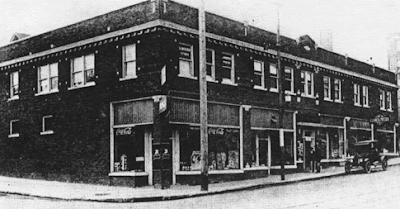 Mike Barrier's book continues to amaze.
Mike Barrier's book continues to amaze.For a while after Harman and Ising (third and sixth from the left in the group shot below) left, Iwerks (with Disney, above) was the only first string animator in the studio. To maximize Iwerks' impact Walt forced a system of assistants and inbetweeners on him, which he apparently resented.
I'm not surprised. It must be hard to come up with something good when a bunch of newcomers are let loose to redraw your scenes. I imagine Iwerks had to lose a lot of time supervising the new guys even though the new system was presented to him as a "time saver." Eventually Iwerks quit.
It didn't matter, Disney continued to tinker with improvements to the system until he came up with the collaborative way of doing things that we have today: the one where animators work from exposure sheets done by someone else, on a story they may have had no part in making, where someone else takes the guts out of their drawing and acting, where every drawing is supposed to be "on model," and their scenes are expected to fit seamlessly into the next guy's scenes.
Compare this to the early days of animation where an animator might be told simply to have his character fight with a turkey for half a minute. The new system might tell the animator exactly what frame the character should lift his leg during the fight. Some animators probably thrived under this kind of control but others like Iwerks must have been disheartened. You get the feeling that a kind of innocence and fun was removed from animation around 1930.

Was Disney's a bad system? No, of course not. It has obvious assets. If an animator works with assistants of his own choosing he really can go faster and sometimes the assistant is a better draughtsman than the animator. Not only that but animators like Scribner and Sibley managed to find sympathetic directors who would give them wider creative latitude. It's hard to imagine that animation's golden age could have occurred under the old system...even so.... did we lose something in exchange for what we gained? Is there a way to get that freshness back?

Just for the heck of it here's a picture of Disney's very first studio in Kansas City. That's the Laugh-O-Gram office on the second floor above the parked car on the right.






















